
IYP 不是过眼云烟的新闻网站,我们提供实战能力,这里是值得您反复回看的档案室:iyouport.org
There is no alternative but revolution: Iran Uprising 2022 – the fight to end capitalist patriarchy

On September 16, 2022, Tehran’s morality police murdered a 22-year-old woman; she allegedly failed to wear a headscarf as stipulated in Iran’s national policy. In response, people across Iran took to the streets to protest en masse for nearly two weeks, confronting police and carving out ungovernable spaces of freedom. To many in Iran, a revolutionary process appears to be underway.
This article, in collaboration with Collective 98 , an anti-capitalist and anti-authoritarian organization focused on the struggle in Iran, interviews Iranian and Kurdish feminists to understand the context. Collective 98 takes its name from “Aban” 98, the uprising that spread across Iran in November 2019 (1398 according to the Iranian calendar). In the following text, they explore the historical significance of this wave of uprisings, and the forces that set it in motion.
The woman who sparked the movement has been widely circulated as "Mahsa Amini" thanks to news reports and social media hashtags. In fact, her Kurdish name is Jina; this is the name she is known to her family, friends and people throughout Iranian Kurdistan. Iran's Kurds - as a minority - often choose a Persian "second name" to conceal their Kurdish identity. In Kurdish, Jina means life and is a political concept that first appeared in a slogan popularized by Kurdish women in Turkey and the Kurdish region of Rojava since 2013 , and became a central word in this round of struggle: Jin , Jian, Azadi [“Women, Life, Freedom”].
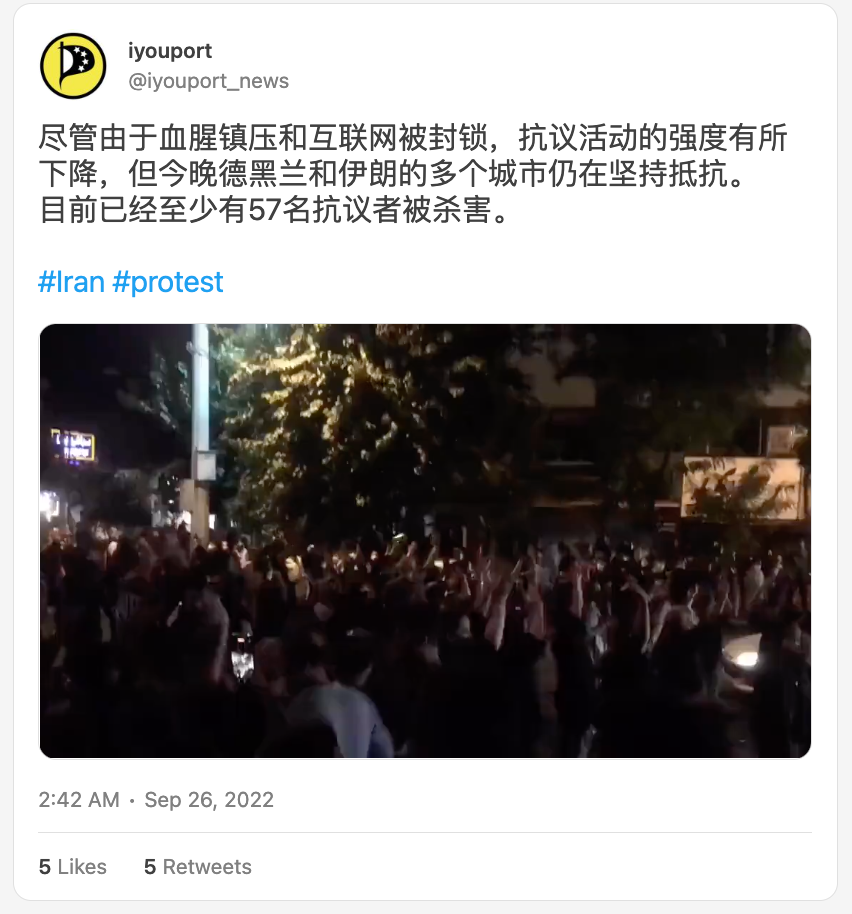
From the uprising in Iran to the anti-war protests in Russia , from the defense of Exarcheia to the student strikes protesting anti-transgender policies in the United States , resisting patriarchy has always been fundamental to confronting capitalism and the state . A victory in Iran would inspire a series of similar struggles elsewhere in the world .
To keep up with developments in Iran, we recommend SarKhatism/ and Blackfishvoice on Telegram (both in Farsi); as well as the websites Slingers Collective and Kurdistan Human Rights Network (both in English).
[Note: Exarcheia is a neighborhood in Athens, Greece whose streets are decorated with politically charged murals, as well as anarchist-themed bookstores and shops selling rare records and antique guitars. Bars and clubs feature live music including Rembetica (Greek blues), jazz and punk rock. The "Defend Exarcheia" movement is against the skyrocketing cost of living and against gentrification . 】
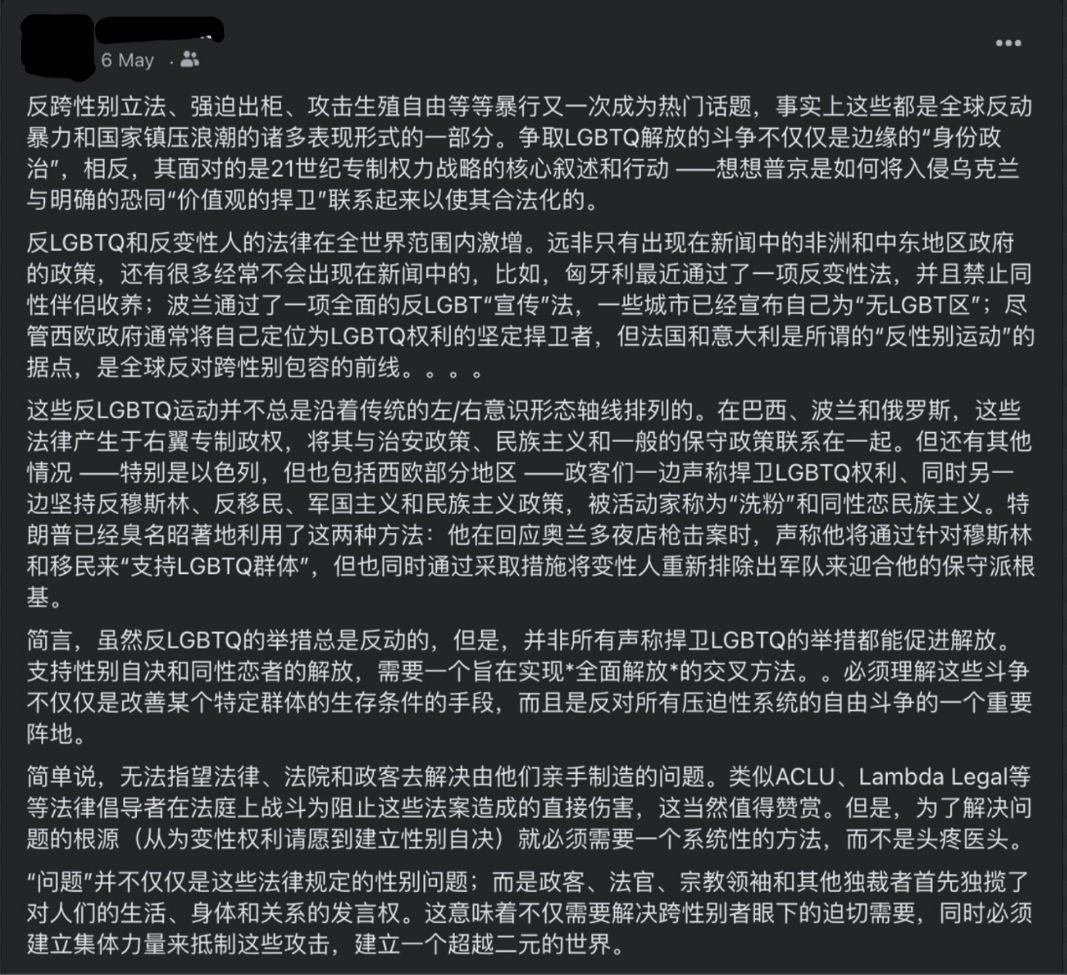

“The beginning of the end”: This phrase was used in a statement issued by the rights group Teachers for Justice on September 25, 2022, one week after the murder of Mahsa/Jina Amini, regarding the current cycle of struggle in Iran. This quote captures the stakes of this historical moment. It means that the proletarians in the streets - especially women and minorities - believe that the end of 44 years of Islamic dictatorship is very close. They have entered a decidedly revolutionary phase. There is no solution other than revolution.
The uprising of December 2017 to January 2018 was a watershed in the history of the Islamic Republic, when millions of proletarians in more than 100 cities across the country rebelled against the ruling oligarchs, fueled by misery, instability, dictatorship, Islamic despotism and violence. A life dominated by repression says: “Enough is enough.” This is the first time that the whole society, especially the left-wing students in Tehran, have expressed their denial of the entire system - "Whether you are a reformist or a hard-liner, get out, the game is over!"
The entire country has been burning for the past five years. You could say it burned from both ends: between the long-running nationwide unrest and the organized struggle involving teachers, students, nurses, retirees, workers and other segments of society. To take just one example , teacher groups have mobilized six large-scale demonstrations and strikes in the past six months, each in more than 100 cities. The movement's leaders and prominent activists have been arrested and are now in jail, but the teachers' resistance movement continues to mobilize.
These two levels of struggle – spontaneous popular uprisings and more organized forms of resistance – are interrelated. Each cycle of struggle is more intense and "militant" than the previous one, and the time intervals between cycles are getting shorter and shorter.
Nonetheless, the death of Mahsa/Jina unleashed some qualitative changes, which must be seen as a break with the historical period of December 2017-January 2018, when the uprising began.
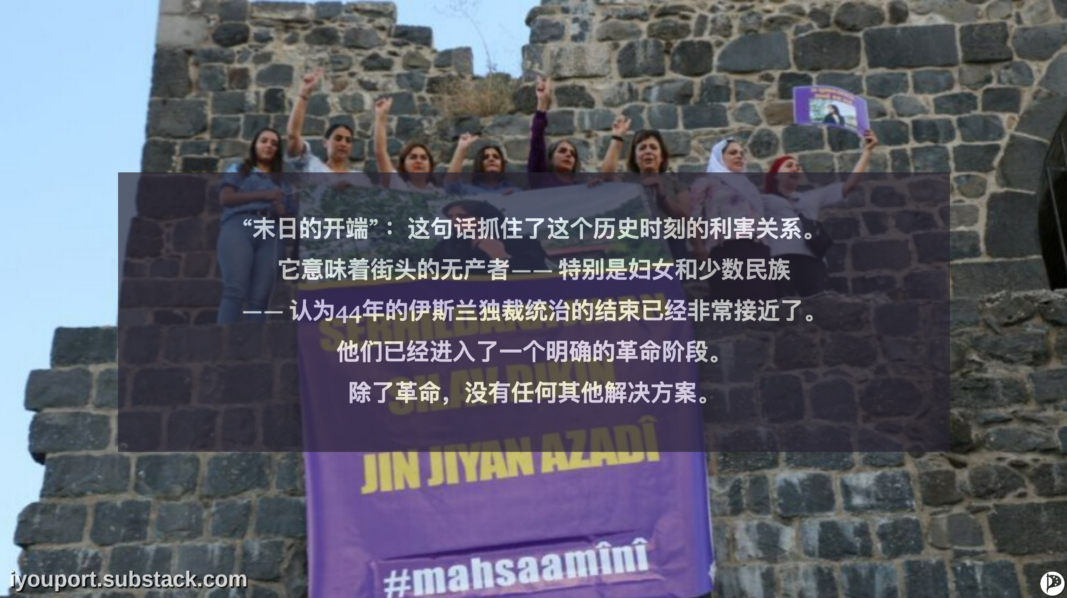
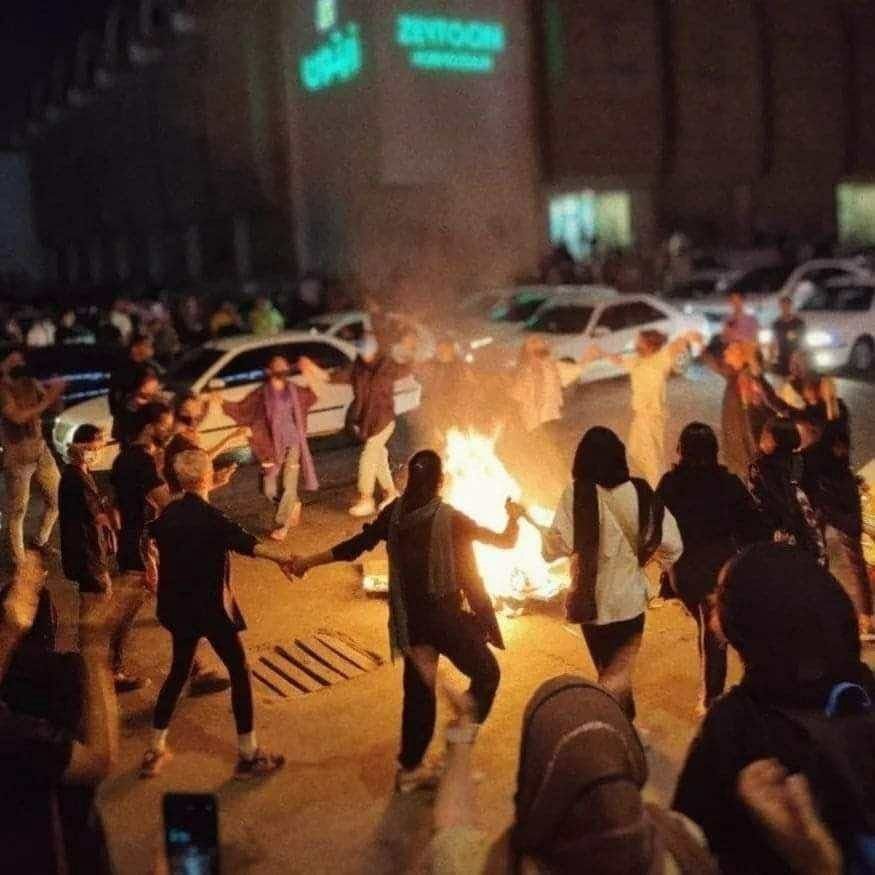
The last round of uprisings was provoked by clear economic conspiracies (for example, the tripling of fuel prices in November 2019) and targeted the widespread misery structurally caused by authoritarian neoliberalism over the past three decades. Iran’s economic crisis and stark class divisions are not simply the result of U.S. sanctions — not what the *pseudo-anti-imperialists would have us believe — nor are they merely the result of the IMF’s imposition after the Iran-Iraq war of the 1990s. the result of structural adjustment. While these are absolutely important factors, the social problems we see are not simply abstract and "external" but are the result of a deeper and longer historical process in which the ruling oligarchy ruthlessly exploits exterminate the vast majority of the population, destabilize labor, commodify all areas of social reproduction, and brutally suppress trade unions, trade unions and any other form of organized political action.
We should not underestimate the catastrophic and damaging impact of US and EU sanctions on people’s daily lives, nor should we downplay the relevance of Iran’s past “semi-colonialism” to the present. We must not forget that the British Labor Party was involved in the 1953 CIA-orchestrated coup that overthrew the democratically elected Prime Minister Mohammad Mossadegh, who advocated the nationalization of Iran's oil industry. It was such imperialist intervention that provided the social conditions for the rise of Islamists like Khomeini, who hijacked the progressive revolution of 1979 and established an authoritarian dictatorship. Rather, our position is one of political denial, operating with the logic of “neither nor” while simultaneously criticizing the Islamic Republic and the United States and its allies. This double negation is fundamental to the formation of true international solidarity and the cause of internationalism itself.
Now, while there have been various cycles of struggle and political organizing over the past five years, this cycle is different because the uprising was ignited by the killing of Zina Amini, a Kurdish woman, Due to the compulsory wearing of hijab - a structural pillar of patriarchal rule in the Islamic Republic since the 1979 revolution. The racial and gendered dimensions of this state killing have changed the political dynamics of Iran, causing unprecedented developments.
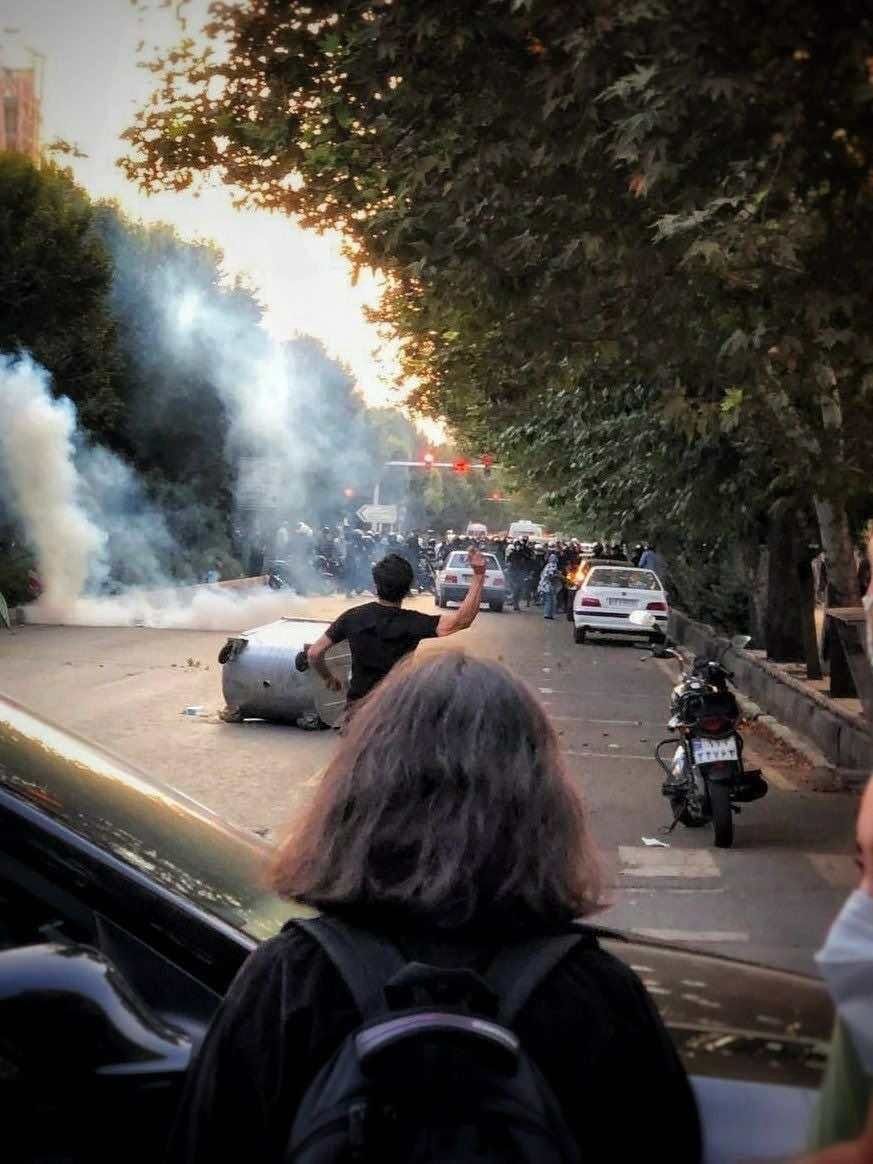
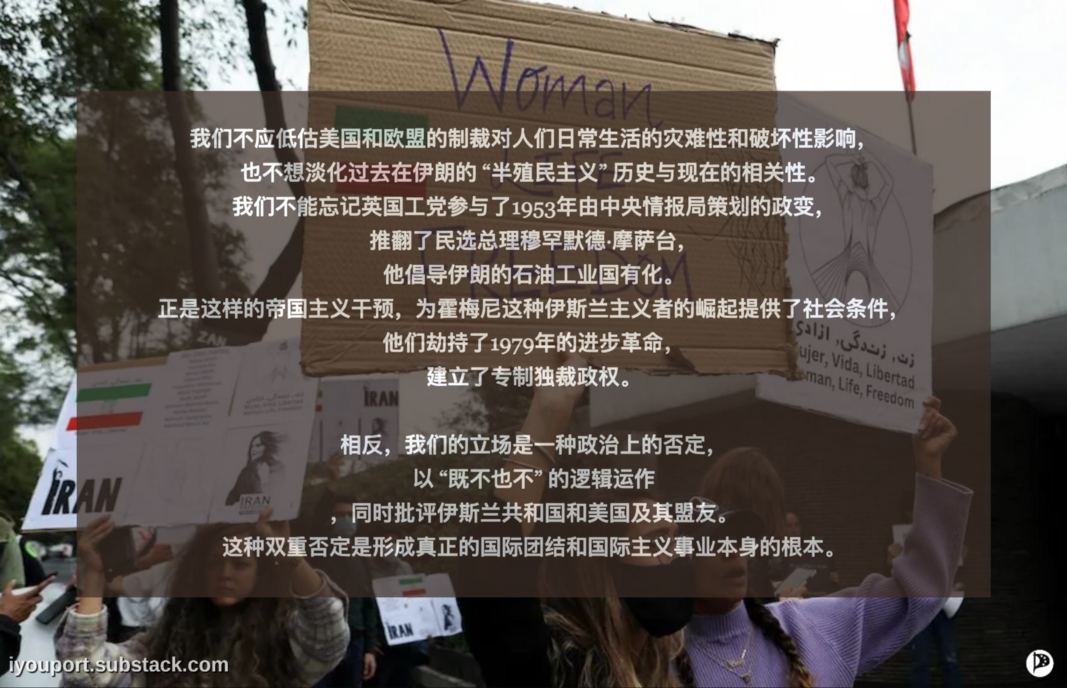
First, the fact that the protests began in Kurdistan—Gina’s hometown of Sargez, where she was born and buried—played a key role in what happened next. Kurdistan has a special place in the history of political movements and social struggles against the Islamic Republic. After the 1979 revolution, when the majority of Persians in Iran said "yes" to a referendum establishing an Islamic republic , Kurdistan resolutely said "no" (see this historical photo ). Khomeini declared war on Kurdistan, or rather "Jahad". What ensues is an armed struggle between the Kurds (and the Kurdish left-wing parties) and the Revolutionary Guards (the Islamist forces that are about to seize power and hijack the revolution). Many non-Kurdish leftists also joined Kurdistan at that time because they saw Kurdistan as the “last bastion” that needed to be defended – a socio-geographic context in which revolutionary progress and left-wing ideals were still possible. Although Kurdistan was defeated after nearly a decade of armed struggle and many other forms of political organization, Kurdistan has never surrendered to the Islamic Republic.
Thus, one of the slogans that emerged after Gina's murder was: "Kurdistan, Kurdistan, the graveyard of fascism." Immediately after Jina's murder, Kurdish women began chanting: "Jin, Jian, Azadi" (Women, life, freedom), a famous slogan originally shouted by Kurdish women in Turkey and recently in Rojava ( The same is true for northern and northeastern Syria). In Iran, the slogan has now spread beyond Kurdistan to all parts of the country, so much so that the current movement, indeed a feminist revolution, is called: “Jin, Jian, Azadi.”
(Demonstrators chanting “Kurdistan, Kurdistan, the graveyard of fascists.”)
Among the three terms of this slogan, the second term Jian [life] has some striking characteristics. Jin [women] refers to gender liberation, Azadi refers to autonomy and autonomy, and Jian, first of all, recalls the name of the symbolic martyr of the movement, Jina Amini (because in Kurdish, Jina also means life). On Gina's grave, her family engraved the following sentence: "Dear Jina, you did not die, your name became a code." She became a universal symbol for all previous martyrs, and for all other "Jinas" whose lives were ruined by the Islamic Republic, directly or indirectly, because of their gender, class, sexual orientation, or the rulers' environmental concerns. destroy.
There is an existential component to this movement, which is also expressed by Iranian users on Twitter (using #Mahsa_Amini or #Jina_Amini) who recount how their lives and those of their friends and family have been transformed over the past 44 years. Wasted – tortured, incarcerated with extrajudicial and show-trials, their lives wasted in daily life outside prison without any chance of being fully realized. As the German philosopher Theodor Adorno said, they have life but no life [Das Leben lebt nicht]. However, this melancholic reminiscence of the past is future-oriented, longing for the eventual end of the zombie Islamic republic that drains our vital energies and processes of life. There is a future that needs to be reclaimed, a future in which no one will be killed because of her gender or the color of her hair, no one will be tortured, no one will suffer poverty - a future made of real and not just formal a classless society governed by freedom (although not everyone agrees with this last goal).
For what could the class war mean but by liberating life from capitalist accumulation and all other forms of colonial domination that sustain and guarantee this accumulation?
When fear stands in the face of a deformed authoritarian regime that shows no principles, it has become its opposite: anger, strength and unity. Not since the 1979 revolution have the oppressed classes been so united. The video showing the sisterhood between women, united against the repressive power of patriarchy, is thrilling for all to watch. The solidarity created between the so-called “center” and the “periphery” across the country, and between traditionally opposing ethnic minorities (Kurds and Turks in the West Azerbaijan province) is unprecedented. The courage and determination of young people to build roadblocks and confront the police with their bare hands or with cobblestones is shocking and admirable.
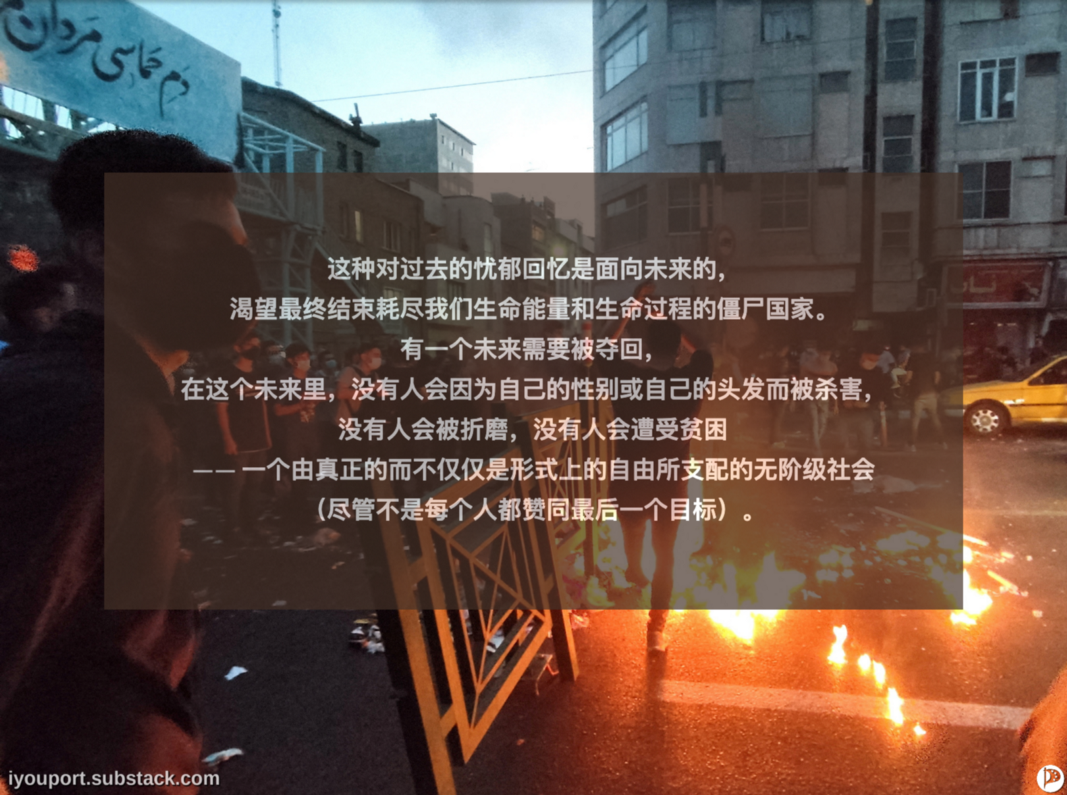

As an oppressed, dominated, and exploited social class, women are at the forefront of transforming fear into anger, subordination into collective subjectivity, and death into life. Female protesters bravely took off their headscarves, waved them in the air and burned them amid fire barricades set up to stop police violence. In Iran, nothing is more powerful than the burning of turbans: it's like the burning of swastikas under Hitler's regime in the 1930s. Contrary to reports in Western corporate media, the protests in Iran are not just about “moral police” – they represent an unwavering rejection of the social, political and judicial structural relationship that systematically reproduces capitalist patriarchy and Sharia law. .
As a social relationship, Hijab marks a set of elements that constitute the Islamic Republic. First, from a symbolic perspective, the enforced hijab represents the entire patriarchal system. The compulsory practice of covering the body is a daily reminder to women of their low status in society, that they are the second sex, that their bodies structurally belong to family, brothers, fathers, male partners and, of course, bosses and the state. Second, the hijab also represents the religious, authoritarian authority that can—or at least has been able to—impose Islamic dress codes on the bodies of the dominated classes, especially women. Opposing the Hijab means fundamentally challenging the authority and legitimacy of the entire Islamic Republic. Third, from an international perspective, as an “Islamic virtue”, Hijab is also understood by the ruling class as the most important representative of “anti-imperialism”. Just as Adolf Hitler systematically used the swastika to ideologically express the "prosperity" and "happiness" of a society ruled by National Socialism, the Islamic Republic imposes headscarves on women to convey the impression that Iran Society was constituted by the realization of so-called Islamic virtues and ideals and was therefore fundamentally opposed to the Western empire and its moral values and social norms. Hijab is thus said to represent an ideological and practical alternative to empire.
Just after the revolution, on March 8, 1979, tens of thousands of women marched through the streets of Tehran against the mandatory headscarf, chanting “We are not revolutionizing to go back” – referring to the reactionary aspects of the mandatory headscarf and aiming to make history The wheels "go backwards". At the time, Islamic media and Khomeini labeled feminists and other women taking to the streets "supporters of imperialism," claiming they approved of "Western culture."
Sadly, the voices of these women were not heard and their warnings were not heeded, not even by the left, which disastrously placed the anti-imperialist struggle ontological priority to the exclusion of all others The dominance of form is relativized and downplayed as "secondary".
Today, when women burn headscarves in the streets and society as a whole emphatically rejects the mandatory hijab, this shakes the entire patriarchal and authoritarian authority and pseudo-anti-imperialist legitimacy of the Islamic Republic to its core. All these are pillars of class rule in Iran, and the entire population is rejecting them. The Islamic Republic has long been dead in the hearts of the people, and now the people must kill it in reality.
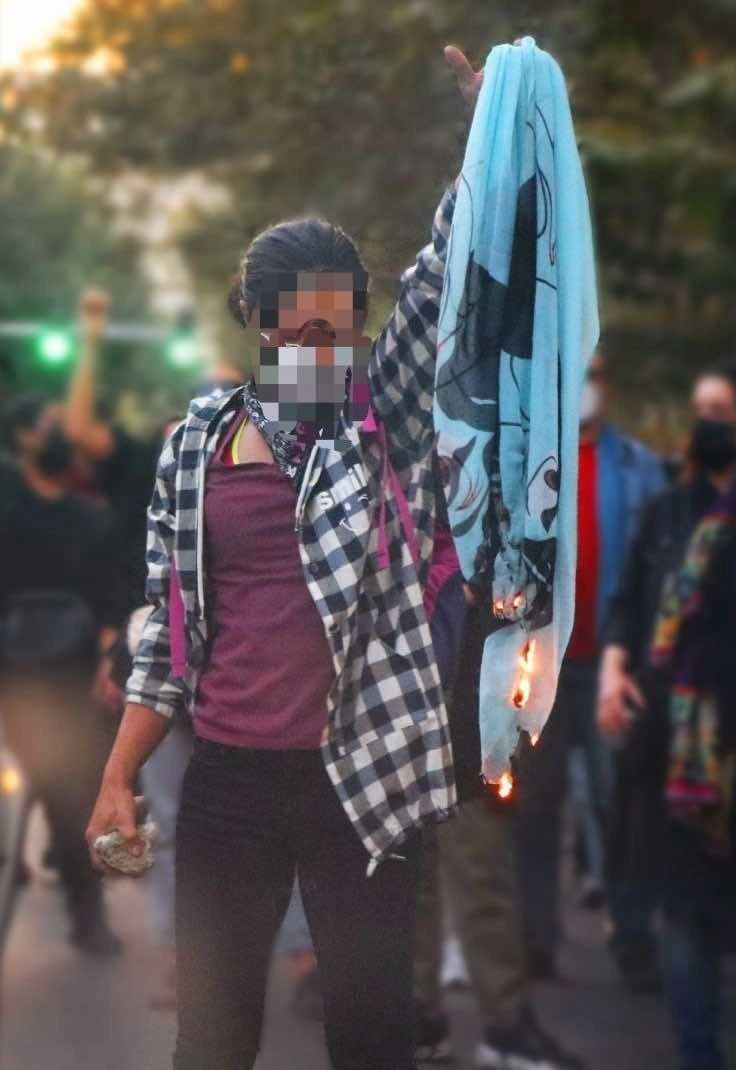
This needs to be emphasized clearly: turban burning is not a right-wing gesture guided by fascist Islamophobia. No one is challenging anyone’s religion. Rather, it is a gesture that announces liberation from the compulsory clothing that controls women's bodies. The hijab has nothing to do with Middle Eastern “women’s culture” — something that some postcolonial thinkers are suggesting to you is simply wrong. In the context of the Islamic Republic, the headscarf is a method of class domination and an integral part of capitalist patriarchy that must be criticized without compromise.
As a historically specific social relationship, capitalism has the ability to use “non-capitalist” social relationships to serve its own accumulation and reproduction. Religion, like patriarchy, is not a thing of the past; it is not an anachronistic remnant with no social validity beneath the surface of modern society. In a capitalist society like Iran, class rule as a whole is mediated and recoded by Islamic law. The mandatory headscarf is a key element of the Islamic Republic’s patriarchy, which marginalizes women and systematically controls their bodies. At the same time, this also led to divisions within the working class broadly defined through gender hierarchies and interpersonal domination.
Those pseudo-anti-imperialists who believe that "the people on the street are just puppets of Israel, Saudi Arabia and the United States" not only deprive people of their agency and subjectivity in a typical Orientalist way, but also presuppose an "abstract" for a society like Iran. essence” — they also replicate the reactionary rhetoric and practices of the Islamic Republic itself. Understanding this is critical for international solidarity with Iranian women and the oppressed classes more broadly. What may shock you is that even religious Muslim women who wear Islamic clothing such as abayas emphatically reject the mandatory hijab and support the movement in the streets and on social media.
With women now at the forefront of the struggle, bravely battling the state's repressive machinery, the Islamic Republic has never looked weaker. The question is no longer “what to do” but how to get it done?
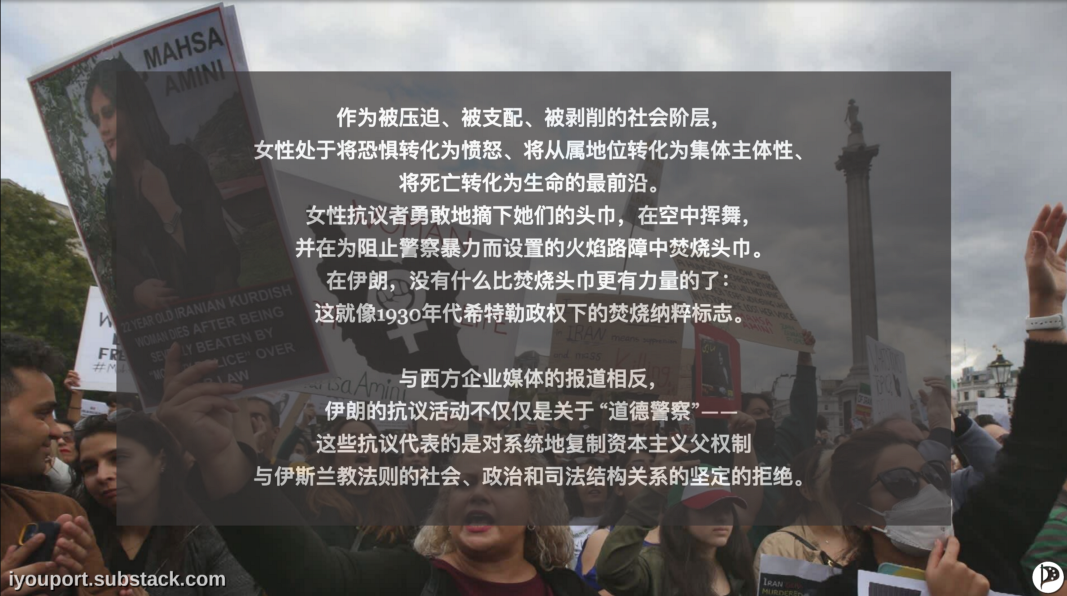
Protests were launched in Kurdistan with feminist and anti-authority slogans. This empowered students at universities – a sector of society always at the forefront of political events – to organize protests and expand the uprising through their rallies and sit-down strikes, especially in Tehran. Like COVID-19, the uprising spread rapidly across the country in the two days following Gina's death; so far, the oppressed classes have fought fiercely against the repressive forces of the regime in more than 80 cities across the country.
Because we have entered a decidedly revolutionary phase, street clashes between protesters and the police and Basij (the militia of the Islamic Revolutionary Guard Corps) are no longer as one-sided as they once were. People have realized that through social cooperation, solidarity and practice they can also exhaust the power of repression and eventually shut it down. Young people in particular are learning various methods of self-defense, such as making a "hand nail screw" to puncture the tires of police motorcycles to stop them from attacking protesters. Independent doctors have posted their mobile phone numbers on the Internet to help those injured during the protests, as it is often dangerous for protesters to go to hospital. There have also been calls for the creation of “neighborhood groups”, local structures that connect people living in the same area.
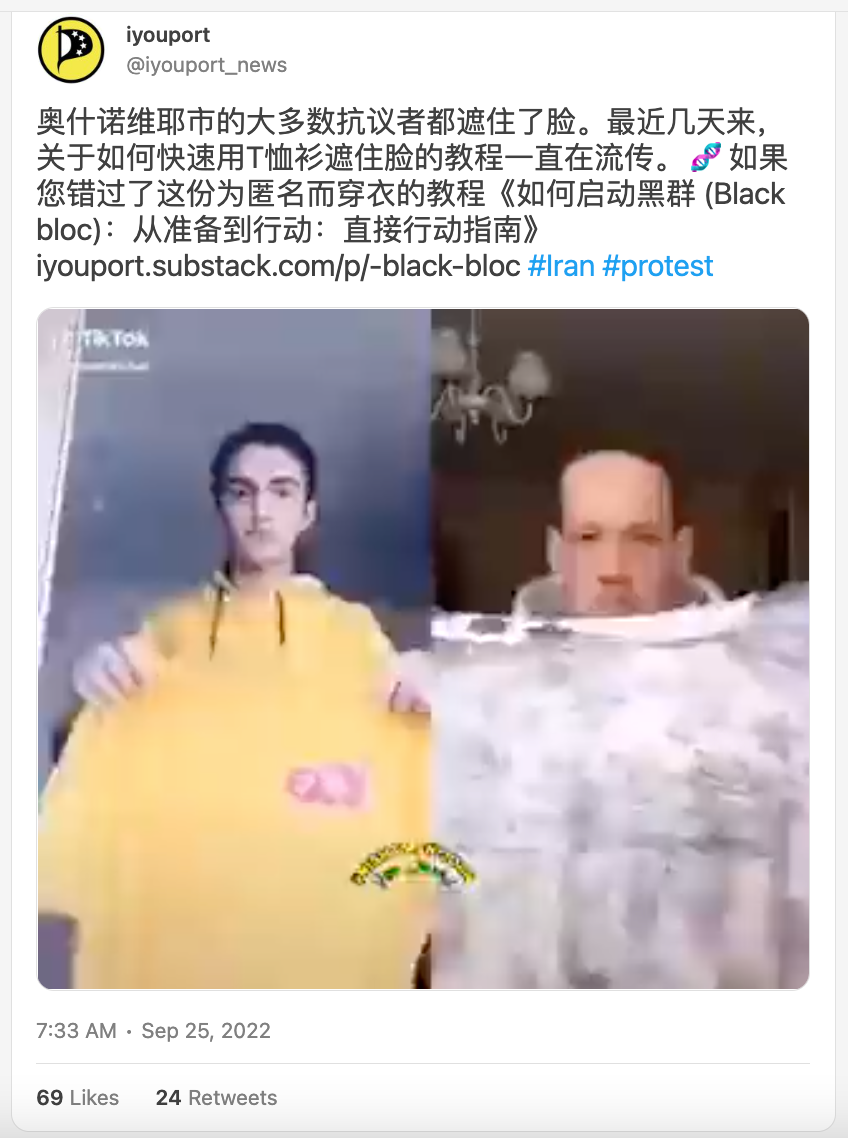
Given that the ideological apparatus of the government has completely failed for the majority of society, the main vehicle through which the Islamic Republic continues to reproduce itself is the apparatus of repression, which has already claimed the lives of 80 people and thousands of protesters in this uprising alone Arrested. Let’s not forget that this happened during an internet blackout, a brutal tactic that the Islamic Republic has resorted to many times in the past, especially during the November 2019 uprising — Abaan-e-Khoonin [“Bloody November”] ] — — At that time, "the authorities completely shut down the Internet for four consecutive days, turning the country into a big black box and brutally killing people with impunity." Gina Amini also represents and calls for the remembrance of the hundreds of martyrs who were killed under the cover of internet shutdowns during “Bloody November.”
Those who support the Islamic Republic consider it an "anti-imperialist force" in global geopolitics, ignoring that it murders its own people in the streets, illegally imprisons people, and tortures them to extract false confessions .
Now, ten days later, the prospects for this round of spontaneous popular uprisings depend on more organized forms of resistance, notably strikes by workers, teachers and students. In Iran, unlike the most advanced capitalist societies, trade unions and syndicates are not integrated into the capitalist system. Unions do not simply seek to achieve their own particular demands, thus hindering the formation of more radical movements; rather, they seek fundamental shifts that the ruling class sees as an existential threat. That is why hundreds of union and syndicate members (teachers, students, workers, retiree activists) are currently in prison and some of them are being tortured.
Over the past four days, many progressive students and teachers have called for a "general strike", and some anonymous radical activists have made inflammatory videos using revolutionary songs written after the 1979 revolution. Oil workers have also threatened to strike if the Islamic Republic continues to crack down on street protests. If that happens, the whole dynamic changes.
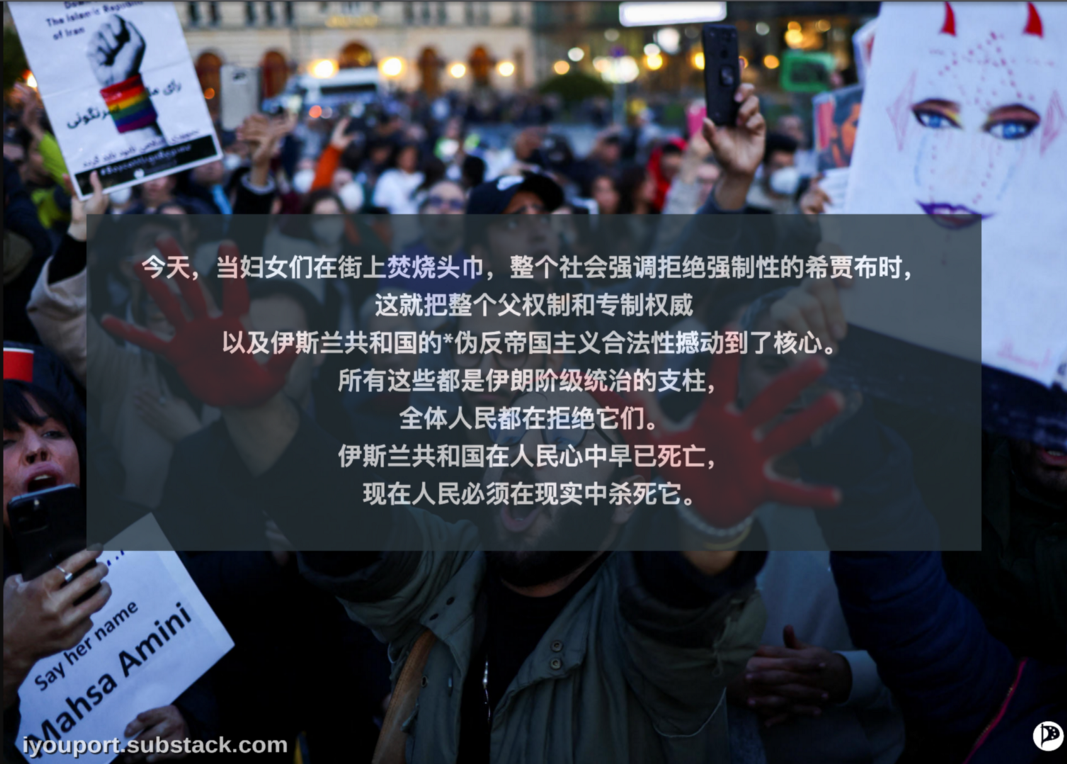
To be sure, the uprising needed new energy, an event that would allow it to continue, because it would be very difficult to sustain such an uprising on a daily basis for a long period of time. More broadly, beyond the current urgency, overthrowing the Islamic Republic will depend heavily on key organizational issues, which will require not only “collective intelligence” but also time to put it into practice through trial and error. The missing link is the organic relationship between spontaneous mass uprisings and other organized forms of struggle. This means that each party to the relationship becomes more coordinated internally through the formation of local-national organizations and more coordinated action between unions and trade unions.
It is important to emphasize – and this is crucial for international solidarity – that the radical tendencies within the movement need to be promoted, while the reactionary elements should be criticized. The revolution that society seeks is not just a political revolution, not just the replacement of the authoritarian Islamic Republic by another, say, more democratic, freer form of politics; it is a complete social revolution, In this revolution, not only the personal subjectivity of the people was changed, but the most important social structure was also changed. Western corporate media (e.g., BBC Persian and Iran International) and celebrity mouths like Masih Alinejad (who works with the most conservative forces in the United States to support abortion bans and “regime change” through military intervention) Pao is doing his best to publicize the reactionary trends in the movement and reduce the entire issue to a "human rights" issue. They mistakenly describe the social relations that arise in the capitalist social structure as merely legal relations. Their manipulative propaganda painted a reactionary alternative that injected "loyalism" into the popular imagination: a politics aimed at restoring the socio-political order overturned by the 1979 revolution.
Fortunately, people on the street are not stupid; they would never believe this. It is important for our internationalist comrades around the world to support the radical trends and slogans of this movement and to oppose those who bring the pre-revolutionary Persian flag of 1979 to demonstrations to spread nationalist loyalties.
The question is not just how to overthrow the Islamic Republic, but how to defend the revolution and its progressive forces after its overthrow. The more support radical and progressive actors have, the easier it will be to defend the revolution against reactionary forces. The Islamic Republic plays a key role in global capital accumulation (through the supply of raw materials such as oil and gas) and in geopolitical power relations in the Middle East. It is clear that regional and global powers will do their best to shape the revolutionary process and manipulate its outcomes to suit their own economic and geopolitical interests. Only with strong international solidarity, in support of the most radical tendencies of the movement, can the yet-to-be-produced revolution maintain its position against the forces of loyalist reaction, against geopolitical interference, and against the violent integration into cycles of global accumulation.
The future is full of uncertainty. However, in the historical process of capitalism, class warfare from below and against all forms of domination will remain an important material force. At this point, we're certain. ⭕️

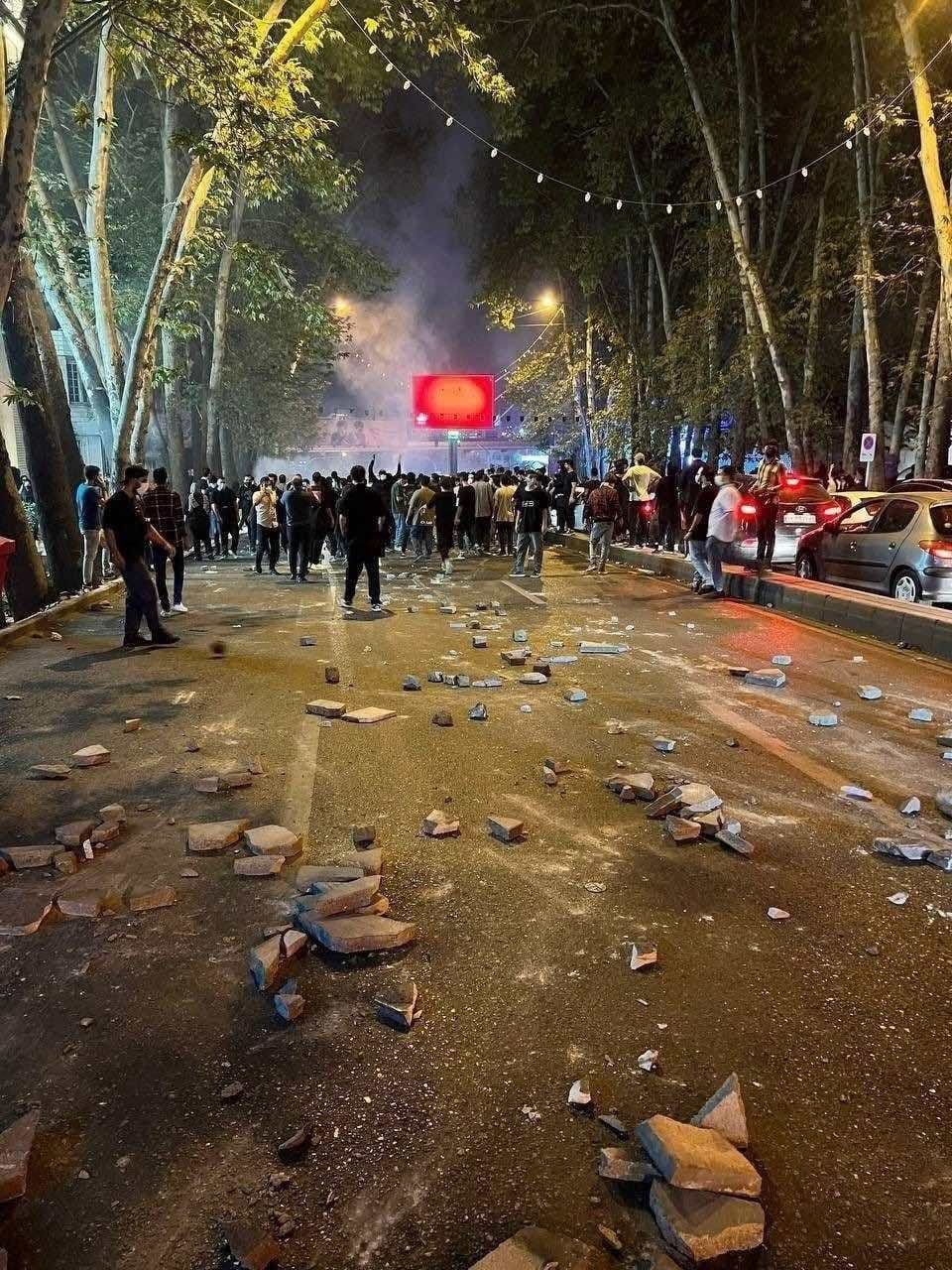
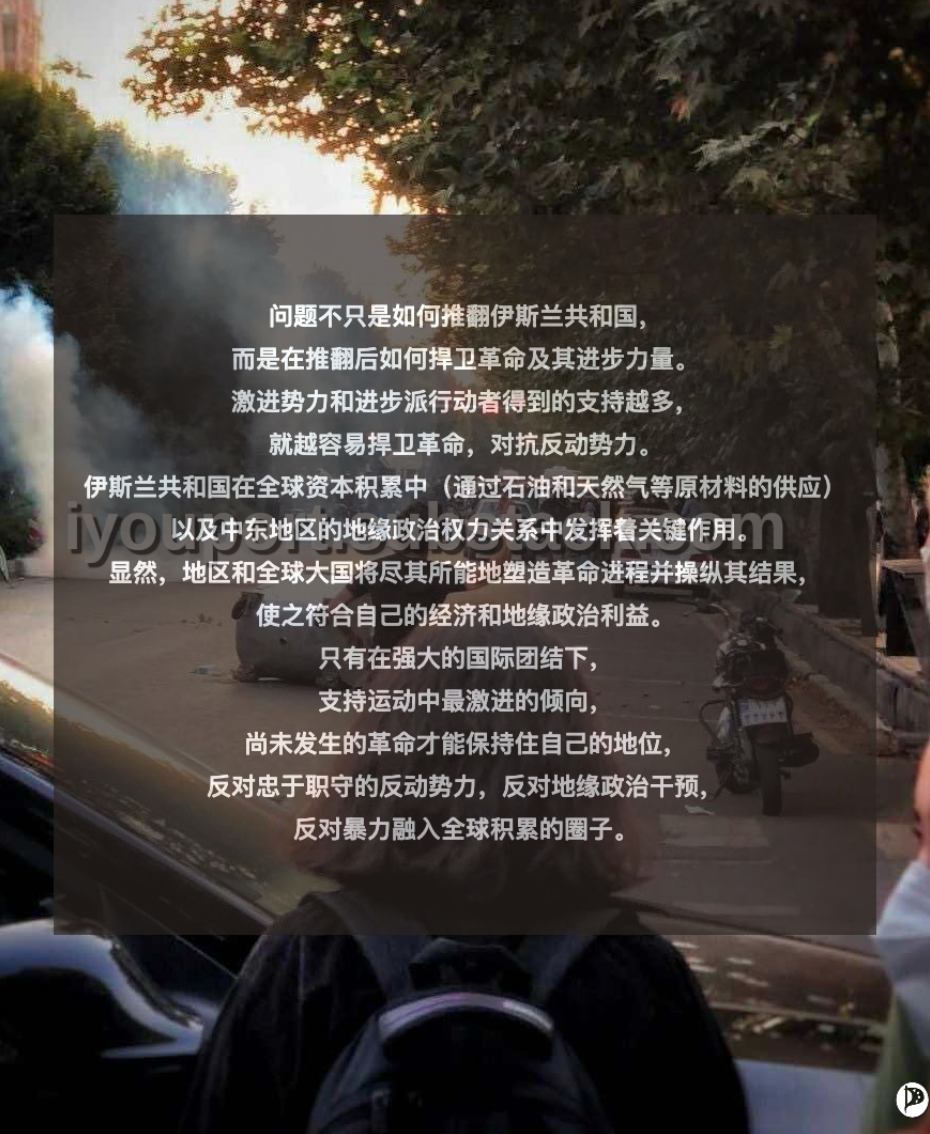
Further reading——
- The Beating Heart of the Labor Movement in Iran — On neoliberalism and resistance in Iran
- The Bread of Freedom, the Teaching of Liberation — An interview with a teacher about the teachers' movement by Collective 98 (Farsi)
- Iranian Pseudo-Anti-Imperialism
- There Is an Infinite Amount of Hope, but Not for Us
- Revolt in Iran
Like my work?
Don't forget to support or like, so I know you are with me..
Comment…